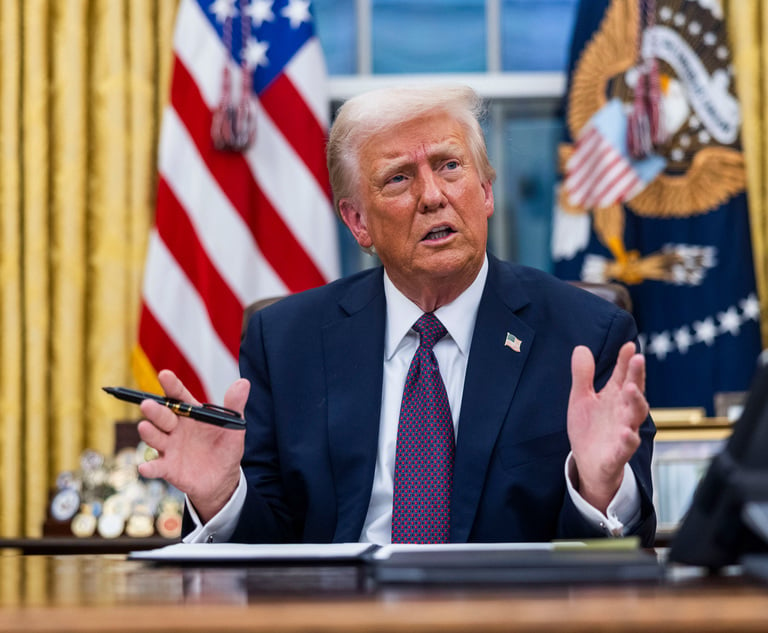IP: 7 benefits of an intellectual property committee
IP committees help companies to think strategically and minimize costs
July 10, 2012 at 06:52 AM
5 minute read
The original version of this story was published on Law.com
Innovators and patent owners should think strategically about how to maximize the patent budget, while intelligently and efficiently protecting and defending innovation. Companies also need to understand the resources available to monitor the intellectual property of competitors and potential acquisitions.
As mentioned in earlier articles on information disclosure systems and subject matter conflicts of interest, an intellectual property committee is key to thinking strategically, moving quickly and minimizing costs when reviewing company intellectual property (IP).
Here are seven ways that an IP committee can help your company:
1. The basics: A fully functional IP committee should meet regularly (monthly, quarterly), should review and discuss all of the IP and issues that have developed since the last meeting, and should comprise someone from management (budget), R&D, sales and marketing and legal.
2. Think broadly: Your patent budget—whether large or small—can no longer fund every new discovery by your research and development teams. The demand for research or patent managers to efficiently utilize the budget is high. Therefore, it's important to thoughtfully review the inventions, tie them together where available and determine early in the process where you want that patent to fit within your portfolio in the long-term (more than five years).
Effective IP committees discuss and document how new inventions are tied to prior research and patent families, how innovations can be logically grouped together in patent applications, and what additional information is needed from R&D teams to get a complete patent or trademark application on file.
3. Monitor developments at USPTO: It is expected that the U.S. Patent and Trademark Office (USPTO) will push more responsibility for examination support back on the applicants and, therefore, an active IP committee is useful to discuss developments, review company resources and put procedures into place to deal with these developments consistently throughout the company. For example, the USPTO is rapidly moving toward requiring prior art searches and related applications be fully disclosed to the USPTO, including search logic, databases used, related inventors, related technologies, etc. 4. Create patent savvy R&D teams: Companies that base their bottom line on innovation lose money every year by not educating research and sales teams on patent basics, including inventorship, documentation and the implications of public disclosures of inventions. An IP committee can track trademark use on company products and services and ensure it corresponds to the registered goods and services. An active IP committee also can develop and disseminate information to technology managers that is targeted at the specific needs of the company, as opposed to general information, along with developing meaningful training programs.
5. Develop an intelligent foreign filing strategy: The Patent Cooperation Treaty process and foreign filing of applications have changed considerably over the last five years. It may be desirable to file in every major country, but can your company defend and enforce those patents? Also, consider the average cost of patent protection in each country is roughly $10,000 per patent application per country. In Europe, the costs increase to $15,000 to $20,000 per application.
Your IP committee should consider a number of variables when reviewing whether to file in other countries: Does your patent budget provide for the added expenses? Can you defend and enforce your patent in those countries? Do you need protection in each of those countries or is there a more strategic approach to foreign filing?
6. Review deals for sales/transfer of patents/patent applications: The USPTO provides several benefits to small entities (small businesses) when filing patent applications, such as 50 percent off of filing fees, reduced compliance requirements under the new rules, etc. When “small entity status patents” are transferred or sold to large entities, they lose their small entity status. The increase in costs and procedures associated with the new large entity status should be part of any due diligence examination by the IP committee and should be evaluated prior to finalization of the transfer.
7. Use public USPTO PAIR database to track competitors and potential acquisitions: The USPTO provides a public database of the status and submitted documents for all published U.S. patents and patent applications. Under proposed USPTO rules, applicants must provide more information to the examiners as to why their inventions are patentable.
In the past, patent prosecutors tried to keep the files as “clean and clear” as possible of these statements, but that goal may no longer be an option. Therefore, companies should be able to review the behind-the-scenes details of patents/applications of their competitors or potential acquisitions to gain valuable insight as to the true meaning and value of those inventions. The IP committee can assign, for example, a competitor or group of competitors to each committee member to review each month.
This content has been archived. It is available through our partners, LexisNexis® and Bloomberg Law.
To view this content, please continue to their sites.
Not a Lexis Subscriber?
Subscribe Now
Not a Bloomberg Law Subscriber?
Subscribe Now
NOT FOR REPRINT
© 2025 ALM Global, LLC, All Rights Reserved. Request academic re-use from www.copyright.com. All other uses, submit a request to [email protected]. For more information visit Asset & Logo Licensing.
You Might Like
View All
Netflix Music Guru Becomes First GC of Startup Helping Independent Artists Monetize Catalogs
2 minute read

Global Software Firm Trying to Jump-Start Growth Hands CLO Post to 3-Time Legal Chief

Meta Workers Aren't of One Mind on Company's Retreat From DEI, Fact-Checking
Trending Stories
- 1No Two Wildfires Alike: Lawyers Take Different Legal Strategies in California
- 2Poop-Themed Dog Toy OK as Parody, but Still Tarnished Jack Daniel’s Brand, Court Says
- 3Meet the New President of NY's Association of Trial Court Jurists
- 4Lawyers' Phones Are Ringing: What Should Employers Do If ICE Raids Their Business?
- 5Freshfields Hires Ex-SEC Corporate Finance Director in Silicon Valley
Who Got The Work
J. Brugh Lower of Gibbons has entered an appearance for industrial equipment supplier Devco Corporation in a pending trademark infringement lawsuit. The suit, accusing the defendant of selling knock-off Graco products, was filed Dec. 18 in New Jersey District Court by Rivkin Radler on behalf of Graco Inc. and Graco Minnesota. The case, assigned to U.S. District Judge Zahid N. Quraishi, is 3:24-cv-11294, Graco Inc. et al v. Devco Corporation.
Who Got The Work
Rebecca Maller-Stein and Kent A. Yalowitz of Arnold & Porter Kaye Scholer have entered their appearances for Hanaco Venture Capital and its executives, Lior Prosor and David Frankel, in a pending securities lawsuit. The action, filed on Dec. 24 in New York Southern District Court by Zell, Aron & Co. on behalf of Goldeneye Advisors, accuses the defendants of negligently and fraudulently managing the plaintiff's $1 million investment. The case, assigned to U.S. District Judge Vernon S. Broderick, is 1:24-cv-09918, Goldeneye Advisors, LLC v. Hanaco Venture Capital, Ltd. et al.
Who Got The Work
Attorneys from A&O Shearman has stepped in as defense counsel for Toronto-Dominion Bank and other defendants in a pending securities class action. The suit, filed Dec. 11 in New York Southern District Court by Bleichmar Fonti & Auld, accuses the defendants of concealing the bank's 'pervasive' deficiencies in regards to its compliance with the Bank Secrecy Act and the quality of its anti-money laundering controls. The case, assigned to U.S. District Judge Arun Subramanian, is 1:24-cv-09445, Gonzalez v. The Toronto-Dominion Bank et al.
Who Got The Work
Crown Castle International, a Pennsylvania company providing shared communications infrastructure, has turned to Luke D. Wolf of Gordon Rees Scully Mansukhani to fend off a pending breach-of-contract lawsuit. The court action, filed Nov. 25 in Michigan Eastern District Court by Hooper Hathaway PC on behalf of The Town Residences LLC, accuses Crown Castle of failing to transfer approximately $30,000 in utility payments from T-Mobile in breach of a roof-top lease and assignment agreement. The case, assigned to U.S. District Judge Susan K. Declercq, is 2:24-cv-13131, The Town Residences LLC v. T-Mobile US, Inc. et al.
Who Got The Work
Wilfred P. Coronato and Daniel M. Schwartz of McCarter & English have stepped in as defense counsel to Electrolux Home Products Inc. in a pending product liability lawsuit. The court action, filed Nov. 26 in New York Eastern District Court by Poulos Lopiccolo PC and Nagel Rice LLP on behalf of David Stern, alleges that the defendant's refrigerators’ drawers and shelving repeatedly break and fall apart within months after purchase. The case, assigned to U.S. District Judge Joan M. Azrack, is 2:24-cv-08204, Stern v. Electrolux Home Products, Inc.
Featured Firms
Law Offices of Gary Martin Hays & Associates, P.C.
(470) 294-1674
Law Offices of Mark E. Salomone
(857) 444-6468
Smith & Hassler
(713) 739-1250






